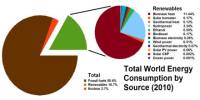Scarcity in Economics
Scarcity refers to the basic economic problem, the gap between limited – that is, scarce – resources and theoretically limitless wants. This situation requires people to make decisions about how to allocate resources efficiently, in order to satisfy basic needs and as many additional wants at possible.
The problem of scarcity is regarded as the fundamental economic problem arising from the fact that, while resources are finite, society’s demand for resources is infinite. Scarcity is a relative rather than an absolute concept – water is more scarce in the desert and less scarce in the rainforest.
Explanation
Without scarcity, the science of economics would not exist. Economics is the study of production, distribution, and consumption of goods and services. If society did not have to make choices about what to produce, distribute, and consume, the study of those actions would be relatively boring. Society would produce, distribute, and consume an infinite amount of everything to satisfy the unlimited wants and needs of humans. Everyone would get everything they wanted, and it would all be free. But we all know that is not the case. The decisions and trade-offs society makes due to scarcity is what economists study.
Some examples of scarcity include:
- The gasoline shortage in the 1970’s
- After poor weather, corn crops did not grow resulting in a scarcity of food for people and animals and ethanol for fuel.
- Over-fishing can result in a scarcity of a type of fish.
- Fewer farmers raising cattle can result in a scarcity of milk and cheese.
- An embargo on imports from a country can result in a scarcity of the resources that country exports.
Causes of Shortages
A shortage occurs when more people want to buy a good at the current market price than what is available. There are three main reasons why a shortage can occur:
- Increase in demand (outward shift in demand curve)
- Decrease in supply (inward shift in supply curve)
- Government intervention
It’s important to note that increases in demand or decreases in supply are not movements along the demand or supply curve. They are shifts in those curves due to other factors, not including price changing. For example, an increase in quantity demanded would be due to a decrease in price. A shift in demand may be due to a sudden market trend where everyone wakes up one morning all having to have a particular pair of shoes.
Scarce Goods and Services
As noted, if scarcity did not exist, all goods and services would be free. A good is considered scarce if it has a non-zero cost to consume. In other words, it costs something. Almost every good we consume as individuals, or as a society, costs something and is scarce. By consuming one good, another good is foregone. Therefore, scarcity creates a need for decisions and trade-offs to be made.
Why are some scarce goods more expensive than other scarce goods? The cost of a good is a signal of its scarcity. One good may be more scarce than another, either because of limited resources or higher want (demand) for that good.
Let’s take two scarce goods – shark meat and chicken. Both have a non-zero cost/price, but we would all agree shark meat is much more expensive to buy than chicken. Why is that? The resources to produce shark meat are largely limited by the labor and capital it takes to catch a shark, while the labor and capital required to produce chickens is less limiting. Even though the resources to produce both are limited, there is much more labor and capital available to produce chicken meat than shark meat. Not to mention the quantity of sharks is also much more limited than that of chickens. Factors like production costs and labor affect the cost of scarce items.
Information Source:
















